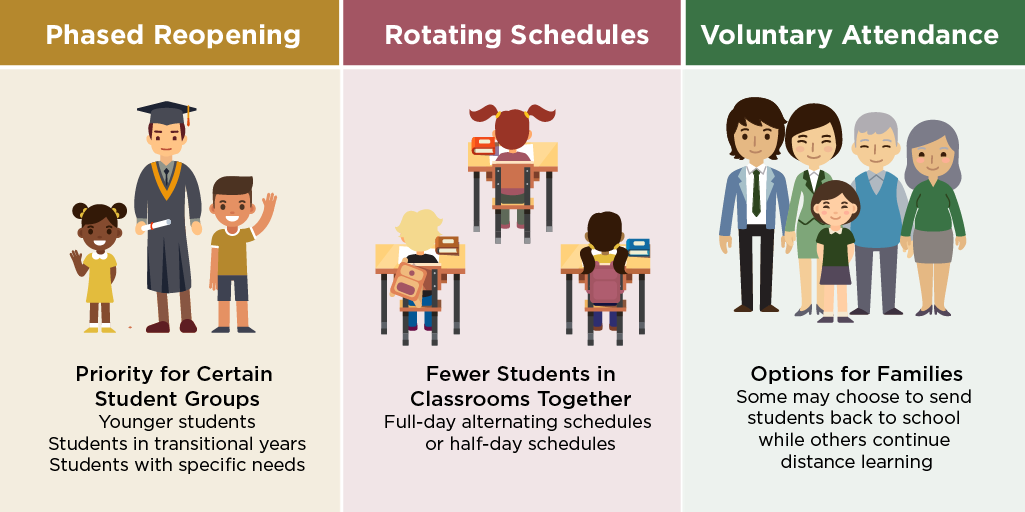
While almost all U.S. states have recommended or required that schools stay closed until summer, many international jurisdictions have already begun reopening schools or are planning to do so by the end of May. A number of factors—including differences in pandemic trajectory, public health infrastructure, and school-year calendars—have prompted these jurisdictions to begin reopening schools on an earlier timeline than the U.S. Among the top performers that have done so, some trends emerge.
The first is that almost all are planning a gradual, phased reopening of schools. One exception is Taiwan, which achieved early control of the spread of the coronavirus and was able to fully reopen schools in February. The other top performers, many of which transitioned to distance learning for a month or more this spring, are taking more gradual approaches. The goal is to limit the number of children in school buildings at once and allow time to adjust school reopening strategies as needed based on careful monitoring of the health situation.
Jurisdictions are prioritizing three main groups of students to return to school first. Most have chosen to start a phased reopening of schools with just one of these groups, while some have included more than one group in the first phase:
- Some jurisdictions are reopening schools starting with primary school students, or primary and lower secondary school students. The rationale is that younger students may benefit most from in-person classes, both academically and socially, and have the greatest care needs once parents and guardians return to work.
- Other jurisdictions are prioritizing students in their final year of upper secondary school—and, in some jurisdictions, lower secondary school or even primary school—because these students need to prepare to graduate and advance to the next stage of school. In some jurisdictions, they also need to take national exams. Older students may also be more likely than younger students to adhere to social distancing guidelines.
- Often in combination with one of the grade-based approaches above, some jurisdictions are prioritizing groups of students based on specific needs for in-person supports. These include students with special educational needs, students who have struggled with distance learning, and students in vocational programs who need to complete hands-on practice.
Other trends concern how to maintain appropriate levels of social distancing, but they have significant implications for teaching and learning. Jurisdictions are experimenting with rotating schedules—including full-day alternating schedules and half-day schedules—to allow for social distancing, and several, recognizing that families have varying levels of comfort with sending children back to school, have implemented voluntary attendance policies. The result is that in many jurisdictions, at least some distance learning will need to continue alongside in-person classes.
The plans that top performers have released to date raise a range of questions—including, for example, how best to support teachers for whom some students are present in the classroom, while others continue distance learning at home—that they are beginning to tackle. The top performers will provide valuable examples as they address the many questions that will inevitably arise during this unprecedented time.




